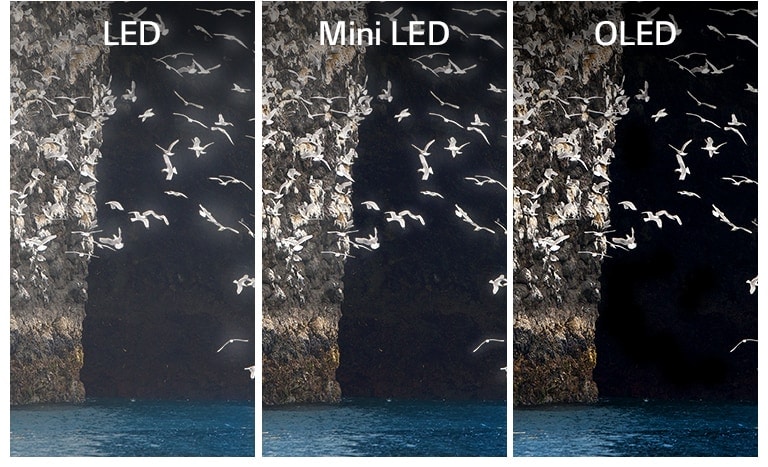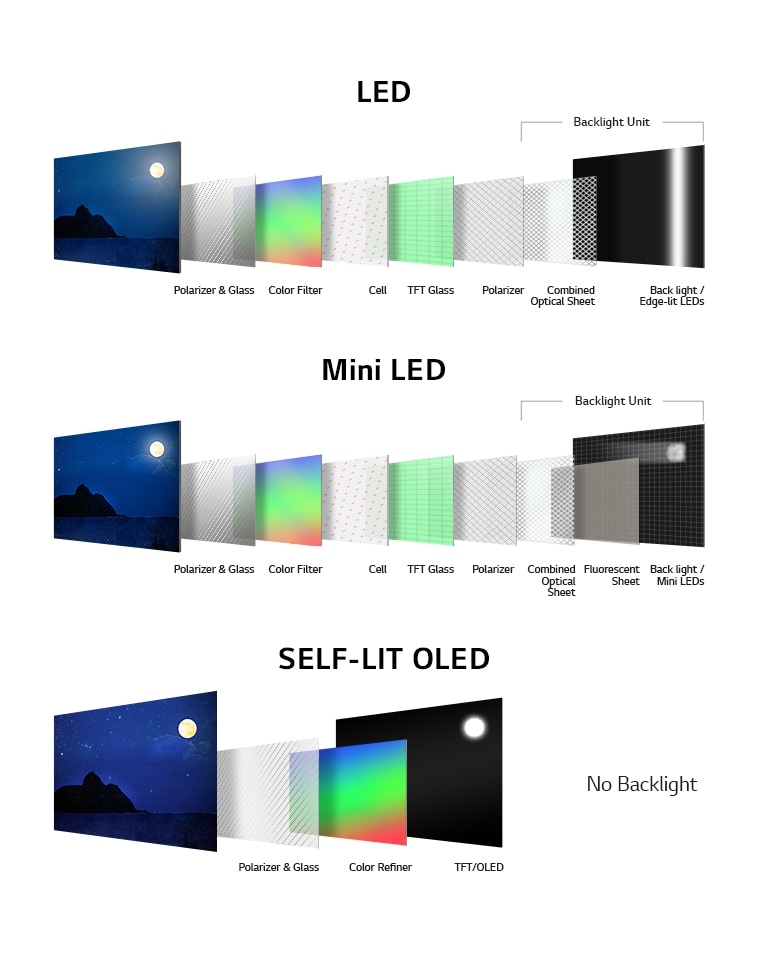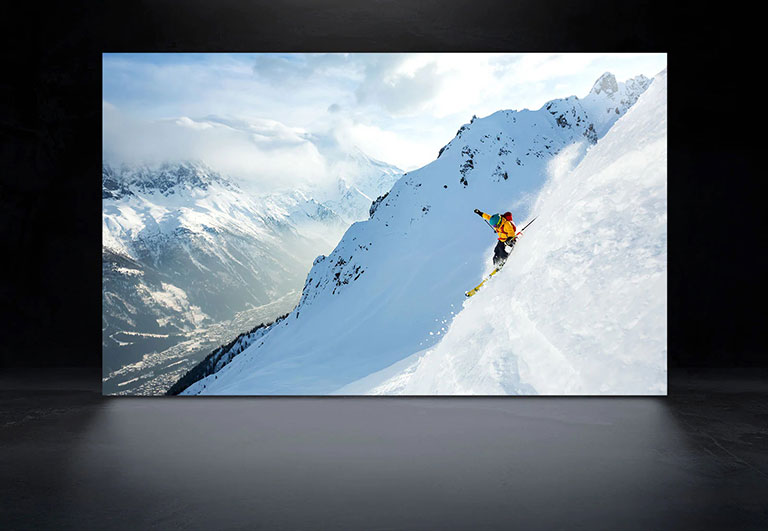We use cookies, including cookies from third parties, to enhance your user experience and the effectiveness of our marketing activities. These cookies are performance, analytics and advertising cookies, please see our Privacy and Cookie policy for further information. If you agree to all of our cookies select “Accept all” or select “Cookie Settings” to see which cookies we use and choose which ones you would like to accept.
Be wowed millions of times over.
Infinite contrast
OLED contrast is infinitely better.
The same content can look different depending on which display technology a TV has. LG OLED TVs have self-lit pixels that turn on and off to achieve perfect black and infinite contrast. LED and Mini LED TVs use backlights that are not self-emissive. This means they can't create perfect black and can also suffer from the halo effect. Self-lit pixels don't have this problem — there's no light bleed and no halo, so you get perfect black and better image quality.
LG Self Lit Pixels Infinite Contrast
LG OLED TV Infinite Contrast
*Screen images simulated.
Self-lit pixels
OLED makes more possible.
Self-lit pixel technology allows LG OLED TVs to be ultra-slim with perfect picture quality. By contrast, LED and Mini LED TVs use backlights combined with numerous other display layers, which affect both screen thickness and picture quality. Backlights also create the halo effect and prevent TVs from displaying perfect black. It doesn't matter how many backlights are used or how small they are, LED still can't compete with OLED. Self-lit pixels can show the tiniest star in the darkest sky with absolute precision and clarity.
LG Self Lit Pixels
Think you’ve found your perfect TV?
100% Color fidelity
OLED color is truly original.
LG OLED TVs not only express perfect black, but also original color. Intertek, a global testing agency based in the UK, has certified that LG OLED displays have 100% color fidelity. This means on-screen colors closely match those of the original image. LED TVs simply can't match this standard of color reproduction.
*Screen images simulated.
Color Fidelity tests determine the difference between the color of an original image and the color expressed by a display. Sample colors were extracted and used in the test. The results verified that 100% of the sample colors shown on LG OLED displays closely matched the original colors. Whereas only 70 to 80% of the sample colors shown on LED displays closely matched the original colors.
*Color fidelity determines whether a display's color accuracy is Delta E≤2 across 125 color samples.
*The test results are for the TV panel.
*83 (210.82CM) LG OLED panel will be certified in the first half of 2021.
Colorful background with the text of 100% for OLED meaning 100% of the sample colors match the original colors.Colorful background with the text of 70~80% for LED meaning only 70~80% of the sample colors match the original colors. A certification logo of Intertek, a global testing agency.
OLED evo
OLED in a whole new light.
LG OLED has evolved. The new panel has been redesigned with an added layer made of a stronger emissive material that refines the wavelengths of light. This increases efficiency and improves brightness with the same amount of light input. The materials used for OLED lighting have also been changed to enhance and strengthen light intensity. The result of all this is a brighter, sharper image, and a better viewing experience.
*Screen images simulated.
A comparison of brightness of TV between OLED evo and OLED. A TV with OLED evo displaying a white image is brighter than a TV with OLED.
*New features are only available with certain models.
*Both TVs were tested under the same conditions.
*It may look different depending on the picture quality mode.
OLED 8K
OLED 8K keeps it real.
There is a clear difference between 8K and 4K resolution — OLED 8K is four times the resolution of 4K. But there's also a clear difference between OLED 8K and LED 8K. LG OLED TVs have self-lit pixels that can be controlled individually to display unmatched levels of depth and detail. They also have the α9 Gen4 Processor 8K, an incredibly powerful chip that upscales 4K to 8K. And with LG OLED TV Z1, you can experience 8K on breathtakingly large 77 (195.58CM) and 88 (223.52CM) screens.
LG Self Lit Pixels OLED 8K
*Screen images simulated.







